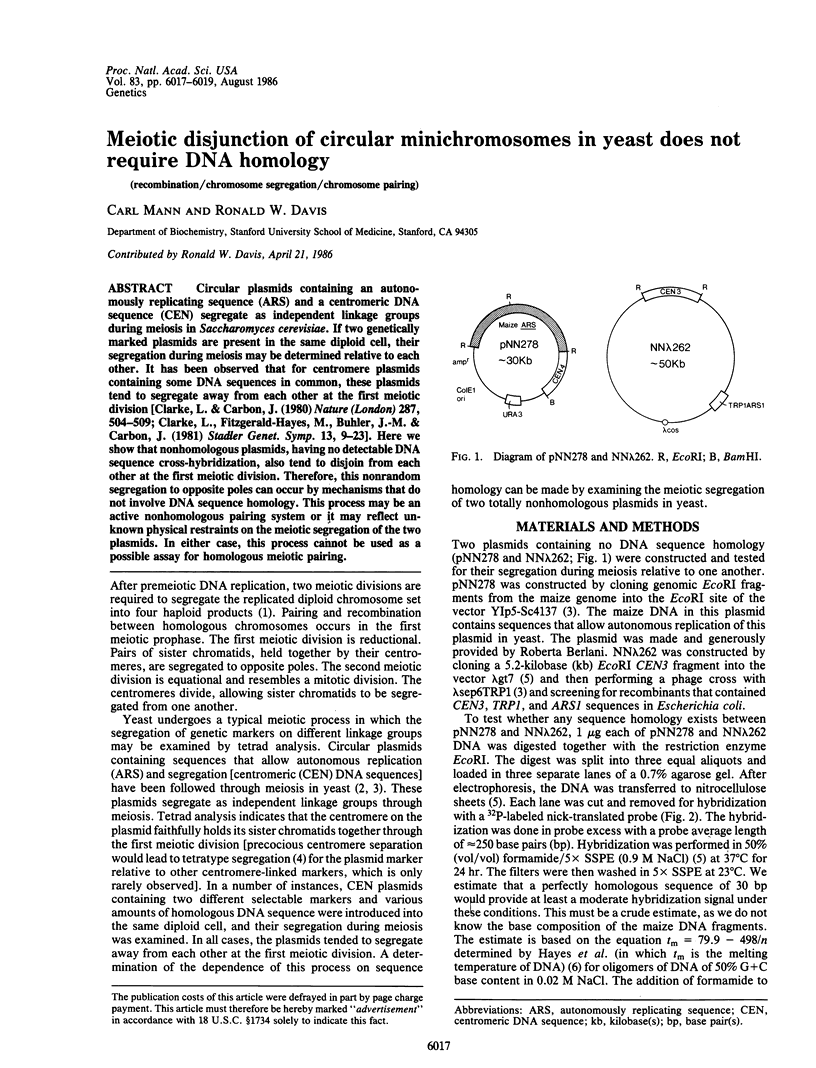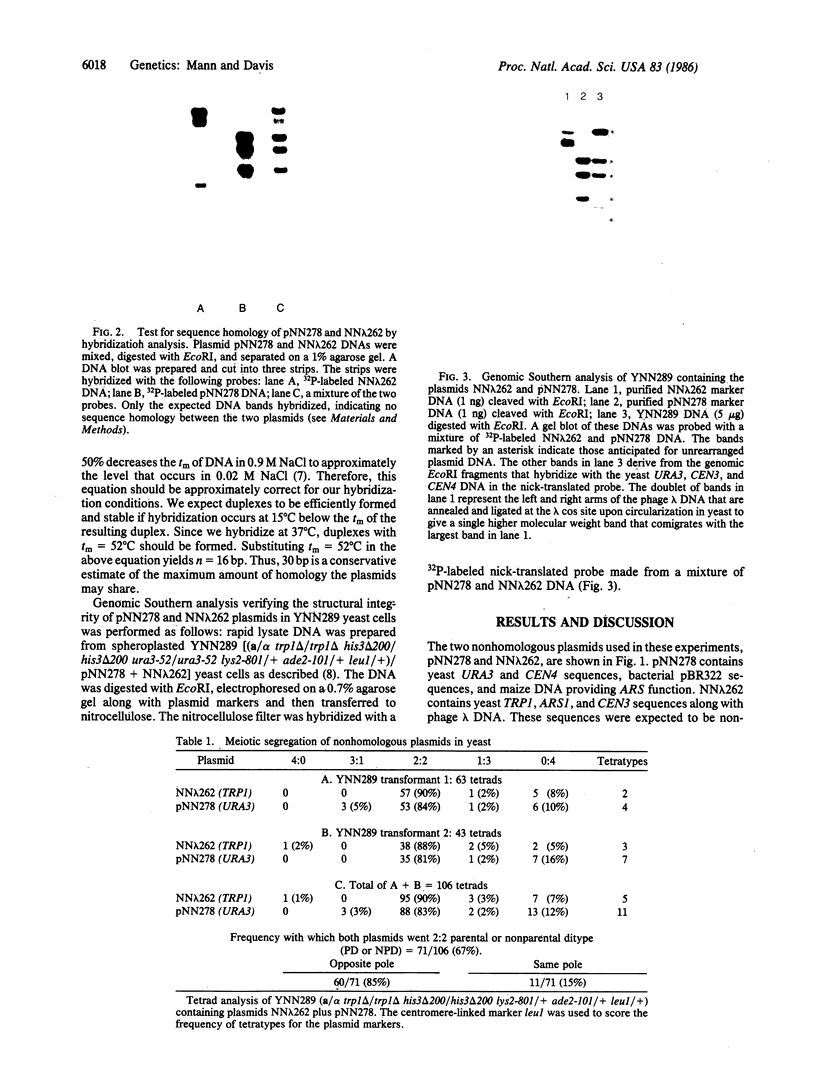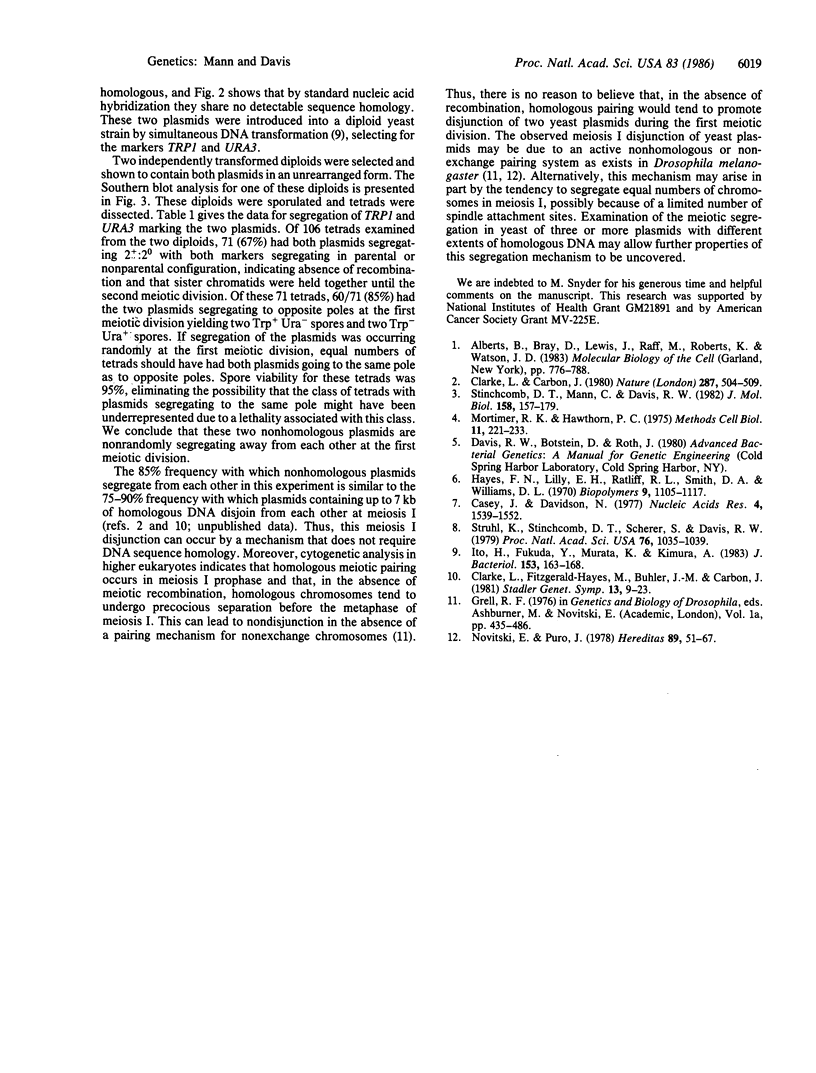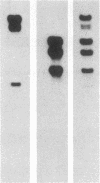Abstract
Circular plasmids containing an autonomously replicating sequence (ARS) and a centromeric DNA sequence (CEN) segregate as independent linkage groups during meiosis in Saccharomyces cerevisiae. If two genetically marked plasmids are present in the same diploid cell, their segregation during meiosis may be determined relative to each other. It has been observed that for centromere plasmids containing some DNA sequences in common, these plasmids tend to segregate away from each other at the first meiotic division [Clarke, L. & Carbon, J. (1980) Nature (London) 287, 504-509; Clarke, L., Fitzgerald-Hayes, M., Buhler, J.-M. & Carbon, J. (1981) Stadler Genet. Symp. 13, 9-23]. Here we show that nonhomologous plasmids, having no detectable DNA sequence cross-hybridization, also tend to disjoin from each other at the first meiotic division. Therefore, this nonrandom segregation to opposite poles can occur by mechanisms that do not involve DNA sequence homology. This process may be an active nonhomologous pairing system or it may reflect unknown physical restraints on the meiotic segregation of the two plasmids. In either case, this process cannot be used as a possible assay for homologous meiotic pairing.
Full text
PDF


Images in this article
Selected References
These references are in PubMed. This may not be the complete list of references from this article.
- Casey J., Davidson N. Rates of formation and thermal stabilities of RNA:DNA and DNA:DNA duplexes at high concentrations of formamide. Nucleic Acids Res. 1977;4(5):1539–1552. doi: 10.1093/nar/4.5.1539. [DOI] [PMC free article] [PubMed] [Google Scholar]
- Clarke L., Carbon J. Isolation of a yeast centromere and construction of functional small circular chromosomes. Nature. 1980 Oct 9;287(5782):504–509. doi: 10.1038/287504a0. [DOI] [PubMed] [Google Scholar]
- Hayes F. N., Lilly E. H., Ratliff R. L., Smith D. A., Williams D. L. Thermal transitions in mixtures of polydeoxyribodinucleotides. Biopolymers. 1970;9(9):1105–1117. doi: 10.1002/bip.1970.360090911. [DOI] [PubMed] [Google Scholar]
- Ito H., Fukuda Y., Murata K., Kimura A. Transformation of intact yeast cells treated with alkali cations. J Bacteriol. 1983 Jan;153(1):163–168. doi: 10.1128/jb.153.1.163-168.1983. [DOI] [PMC free article] [PubMed] [Google Scholar]
- Mortimer R. K., Hawthorne D. C. Genetic mapping in yeast. Methods Cell Biol. 1975;11:221–233. doi: 10.1016/s0091-679x(08)60325-8. [DOI] [PubMed] [Google Scholar]
- Stinchcomb D. T., Mann C., Davis R. W. Centromeric DNA from Saccharomyces cerevisiae. J Mol Biol. 1982 Jun 25;158(2):157–190. doi: 10.1016/0022-2836(82)90427-2. [DOI] [PubMed] [Google Scholar]
- Struhl K., Stinchcomb D. T., Scherer S., Davis R. W. High-frequency transformation of yeast: autonomous replication of hybrid DNA molecules. Proc Natl Acad Sci U S A. 1979 Mar;76(3):1035–1039. doi: 10.1073/pnas.76.3.1035. [DOI] [PMC free article] [PubMed] [Google Scholar]




